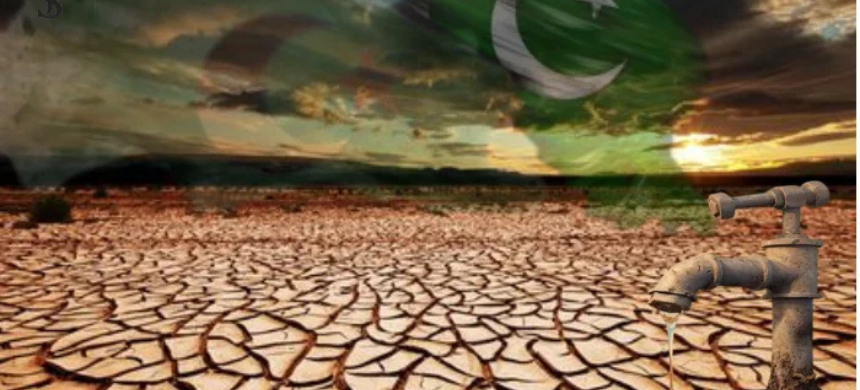Pakistan’s Growing Water Crisis: Climate Change, Mismanagement, and Urgent Solutions
Pakistan stands at the brink of a major water crisis as the Meteorological Department raises alarms over severe shortages in Sindh, Punjab, and Balochistan. Over the past six months, rainfall has been alarmingly scarce, creating drought-like conditions that now threaten agriculture, drinking water supply, and the country’s economic stability. These water challenges are being exacerbated by rapid climate change, erratic weather patterns, and systemic mismanagement of water resources.
IRSA Issues Warning Amid Dwindling Resources
The Indus River System Authority (IRSA) has cautioned that Punjab and Sindh—the agricultural heartlands—should prepare for up to 35% water shortages during the ongoing Rabi season, especially impacting wheat crops. The upcoming Kharif cropping season also begins under the shadow of severe water scarcity, a result of lower-than-average snowfall during the winter.
Read More Islamabad and Quetta Confront Severe Water Crises
IRSA hopes that monsoon rains may alleviate the crisis later in the season. However, this pattern of seasonal shortages followed by inter-provincial disputes over water allocation is becoming the norm.
Farmers and Cities Face the Consequences
The impact is especially severe for tail-end farmers who rely on water from the Indus River—Pakistan’s main freshwater source—now under immense pressure from climate-related changes and poor management. Urban centres such as Islamabad, Lahore, Karachi, and Rawalpindi are already facing significant water supply issues, raising concerns for both urban and rural populations.
Experts warn that without immediate intervention, the crisis could lead to mass migration, food insecurity, and economic downturn.
Climate Change and Poor Governance: A Deadly Combination
Environmental Factors Intensifying the Crisis
Pakistan has become one of the top 10 countries most vulnerable to climate change, according to Germanwatch. Abnormal rainfall, longer dry spells, and rising temperatures are shrinking glaciers and increasing evaporation rates. The Tarbela and Mangla dams—key to Pakistan’s water storage—have reached critical “dead levels,” confirming IRSA’s forecast made in October.
Rainfall from September to March was 40% below average, compounding the scarcity. Despite sporadic showers in some northern areas, water reservoirs have not been adequately replenished.
Chronic Mismanagement of Water Resources
Dr. Hassan Abbas, a renowned water expert, emphasizes that Pakistan’s 200-year-old irrigation system is ill-equipped to deal with today’s climate conditions. This aging infrastructure, combined with leaky canals, outdated farming techniques, and groundwater overextraction, has created a perfect storm.
Former federal minister Sherry Rehman highlighted in parliament that the issue extends beyond natural causes to structural inefficiencies, lack of investment, and weak policy enforcement.
An Agrarian Economy at Risk
Agriculture uses about 92% of Pakistan’s water resources, yet remains highly inefficient. Experts like Mahmood Nawaz Shah call for a rethink in crop choices—moving away from water-intensive crops like sugarcane and rice toward nutrient-rich, drought-resistant crops like mung beans, lentils, and chickpeas.
Pakistan must also modernize irrigation by adopting practices like drip irrigation, precision farming, and developing hybrid seeds that can withstand saline soil and rising temperatures.
From Abundance to Scarcity: A Dangerous Decline
At the time of independence in 1947, Pakistan had over 5,000 cubic meters of water per person annually. Today, that number has dropped below 1,000 cubic meters, pushing Pakistan into the water-scarce category, as defined by the World Resources Institute.
The consequences of unregulated tube wells and urban sprawl are visible: in cities like Peshawar, the water table has fallen by 30 feet in just six years.
Looking ahead, the situation is grim. By 2047, Pakistan’s population is expected to double, while water availability may be halved—leading to a 75% reduction in per capita water supply.
Urgent Reforms Needed at Every Level
To address this crisis, Pakistan must take the following immediate steps:
- Invest in climate-resilient infrastructure
- Enforce sustainable groundwater extraction policies
- Reform agriculture and irrigation systems
- Launch nationwide water conservation campaigns
- Encourage rainwater harvesting and recycling
Without comprehensive and sustained reforms, the country risks facing a full-scale humanitarian and economic catastrophe. Climate change is not just a future threat—it’s a present reality, already shaping the lives of millions in Pakistan.
Final Thoughts:
Pakistan’s water crisis is no longer a distant threat—it’s a present-day emergency. While climate change is a major driver, the crisis has been intensified by decades of negligence and policy inertia. The nation must act decisively—before it’s too late.











